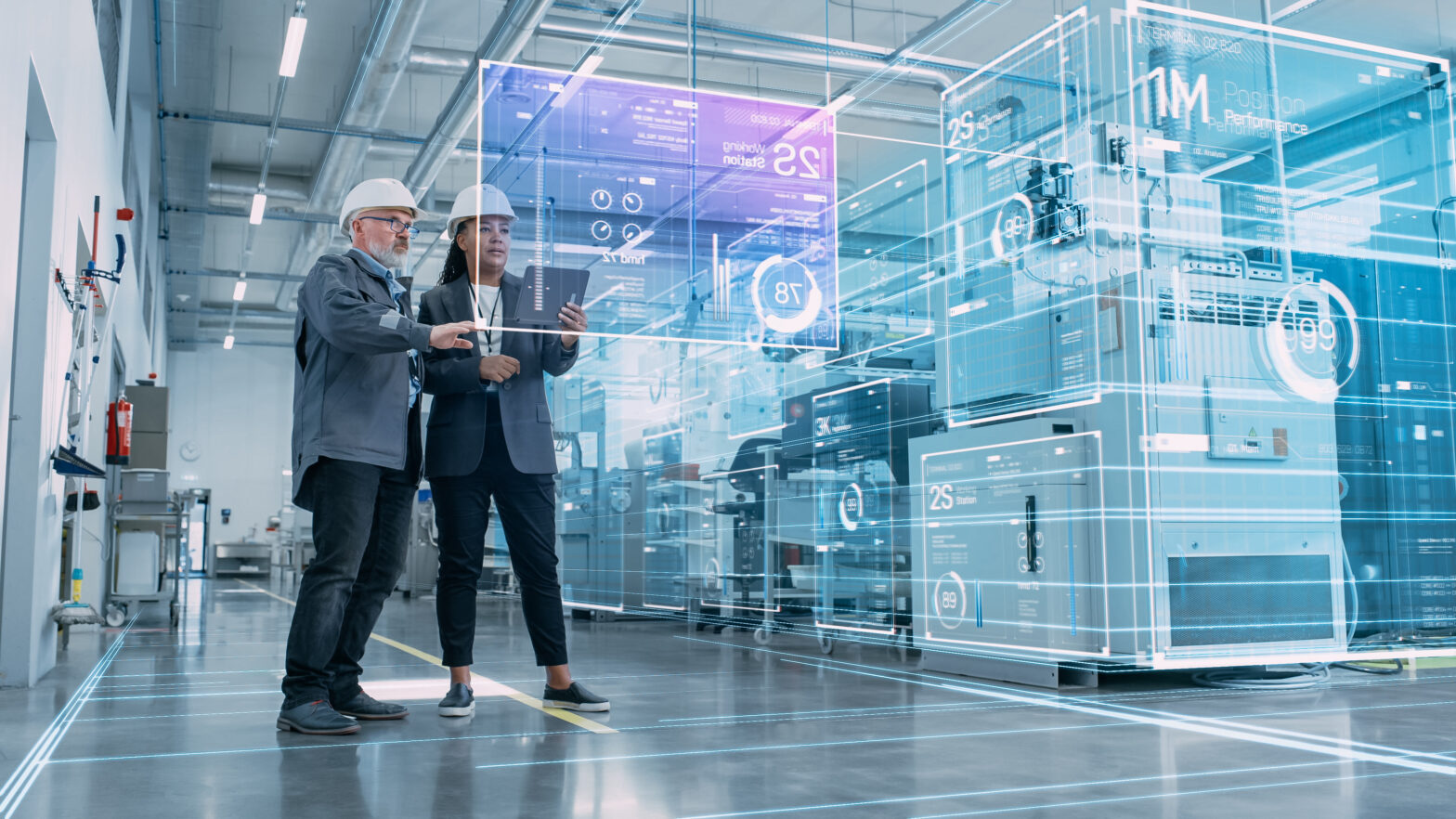Artificial intelligence will influence a lot of the technology trends we see emerging in 2024 – but, it won’t be the only development worth watching. Expect to see miniaturisation, quantum computing and the open-source movement driving changes in the technology industry.
2024 could also be the year when we start to see technology from science fiction movies come to life, as a confluence of technologies turn the stuff of fantasy into reality. To see how, take a look at what’s likely to transform the technology industry over the next year.
#1 – Advanced HMI
If you’re a fan of Minority Report, a film set in 2054, you’ll be familiar with the scene where Tom Cruise controls augmented reality (AR) projections using hand gestures. Well, it’s highly likely we’ll see this type of user interface filtering into our everyday lives during 2024 – thirty years earlier than anticipated by the movie.
This kind of human machine interface (HMI) will transform the way people behave in various scenarios – this includes how drivers interact with their cars, engineers work with heavy machinery, laboratory technicians operate in hazardous environments, and much more. Advanced HMI won’t all be about gesture recognition, however.
Expect to see greater adoption of natural voice interfaces around the world, as AI enables more native language interactions with virtual assistants and chatbots. This should finally break the barrier that kept millions (if not billions) of potential customers away from technologies such as home assistants, which only operate in a few selected languages.
It is also expected that these voice interfaces will finally take on a more natural, conversational-like form. This will be the beginning of the end for command-like interactions which can be extremely inefficient – often requiring the user to repeat an instruction over and over, when just a single word is not understood. This will see existing systems redesigned to make them more adaptable and agile, with a number of supported functions breaking away from the pre-design subset of cases.
For scenarios where verbal communication is not sufficient, there is also another channel emerging from the scientific laboratories – mind control. This is unlikely to reach the commercial market this year but, as brain imaging helmets and implants could completely change HMI as we know it, businesses will need to start preparing for opportunities that will arise.
#2 – Miniaturised computing
One of the major reasons why we will see advanced HMIs being built is down to the powerful computing capabilities now being packed into small devices. While just two years ago it was unusual to see AI-enabled microchips being embedded into devices, this is now becoming normal.
The increasing prevalence of 5G networks is also giving devices rapid access to computation that is taking place on an Edge computing platform or Cloud environment. This means we can put the power of an industrial computer into a device no bigger than a wristwatch or a mixed reality lens.
As these peripheral devices become more capable, they will be able to utilise computer vision technology and machine learning to make sense of the world around them. They will also be able to use generative AI (GenAI) to render VR and AR graphics, creating extended reality experiences.
#3 – No code developers
The emergence of Gen AI is also enabling people with no technical skills to develop commercial software applications from scratch, just by explaining their business needs. We’re seeing the dynamics around this change on a weekly basis – and it’s creating new opportunities all the time.
If we’re being honest, we don’t exactly know what direction this will go in 2024. What is clear, however, is that generative AI is highly efficient – more so than we will ever be – and this will accelerate the speed of change.
Businesses will need to monitor this trend closely over the coming year, to see where competitive gains can be made. They will be looking to quickly steal competitive advantage and monetise the opportunities presented to them. So watch this space.
#4 – Cyber disruption
We also need to keep a watchful eye on Gen AI for more nefarious reasons too. There is a high probability that malicious actors will also co-opt this technology to create computer viruses – leading to a surge in malware.
AI is not the only cyber security concern, however. We are also seeing major developments in quantum computing. This could enable hackers to break encryptions that would currently take years to break, within minutes. Over the next year, there are likely to be some big announcements in this space from the big tech companies, as well as a stream of start-ups pouring into the market.
Due to these developments, cyber security professionals will need to build robust resistance into their systems and resilience into their processes. This will also impact the producers of connected products – as regulators, such as the EU, continue to tighten security standards around IoT devices.
#5 – Open-source movement
Regulators will also continue to play a role in the standardisation of technology, encouraging businesses to build more predictable and universal solutions. Under EU law, for example, it will be mandatory for a wide range of electronic products to have a USB-C port, for charging purposes, from 2024. This is likely to deter proprietary developments in this field of technology and encourage a move towards greater open-source product standardisation.
This isn’t the only reason for a growth in open-source technology, however. We expect to see companies relaxing their licensing in pioneering areas of technology as they look to encourage mass adoption. This will follow the example set by the Google Android, which has almost become the default operating system used within in-vehicle infotainment (IVI) systems deployed by the automotive industry – while also gaining popularity in payment terminals and various other HMIs. It’s almost hard to believe Android started out as an operating system for smartphones.
There has also been a recognition that an open-sourcing approach helps to create more robust systems, as it encourages more people to challenge, and improve, the source code. There is a consequence to this though – it can take that code in unpredictable directions. Because of this, it’s an approach that won’t be universally popular. Sectors like financial services are likely to want to stick with the more predictable certainty of closed systems.
Final thought
The above trends have the potential to drive rapid change in 2024 – but, there is a great deal of uncertainty over the direction in which many of these developments will take us. It’s likely that some businesses will need to adapt quickly as a result.
So, it is well worth considering if these transformative trends could impact you and your organisation. Does your businesses have the processes and skills in place to ensure you can pivot and adjust if needed? While 2024 is set to be an exciting period of change, we need to be ready for wherever that takes us next.
Mariusz Stolarski is the global head of technology at Mobica.
More on technology trends
How insurtech is using artificial intelligence – Insurance technology (insurtech) is rapidly evolving, allowing for digitalisation of insurance sector processes. Here, we explore the role of AI in this trend







